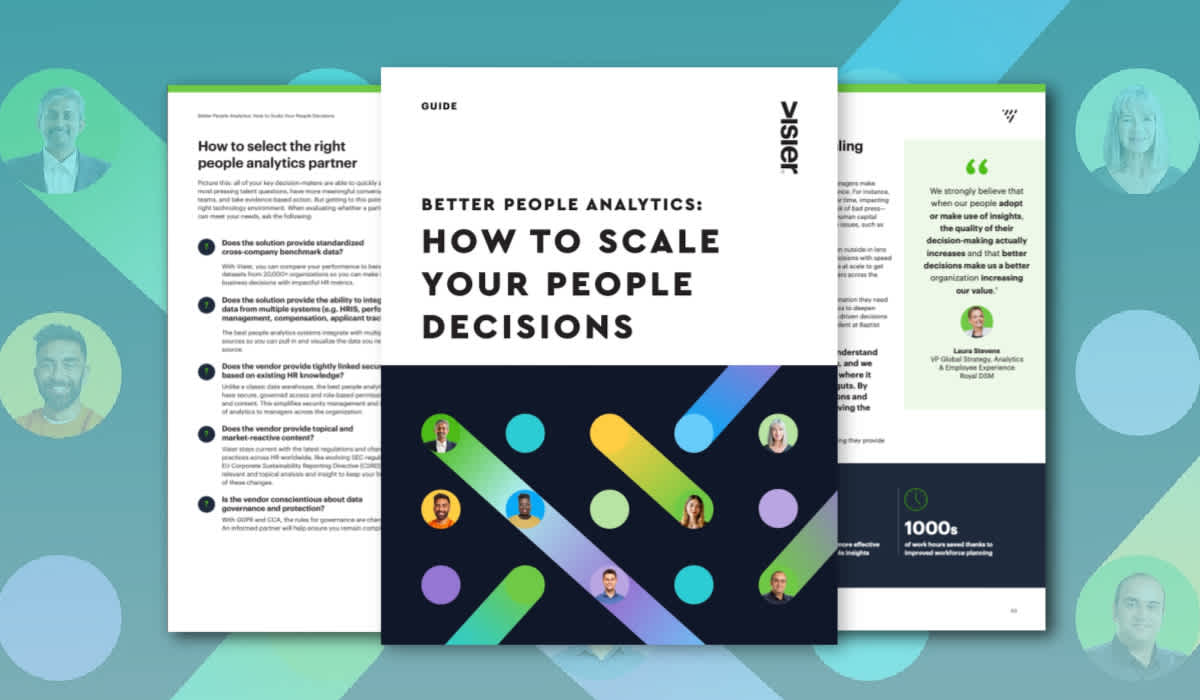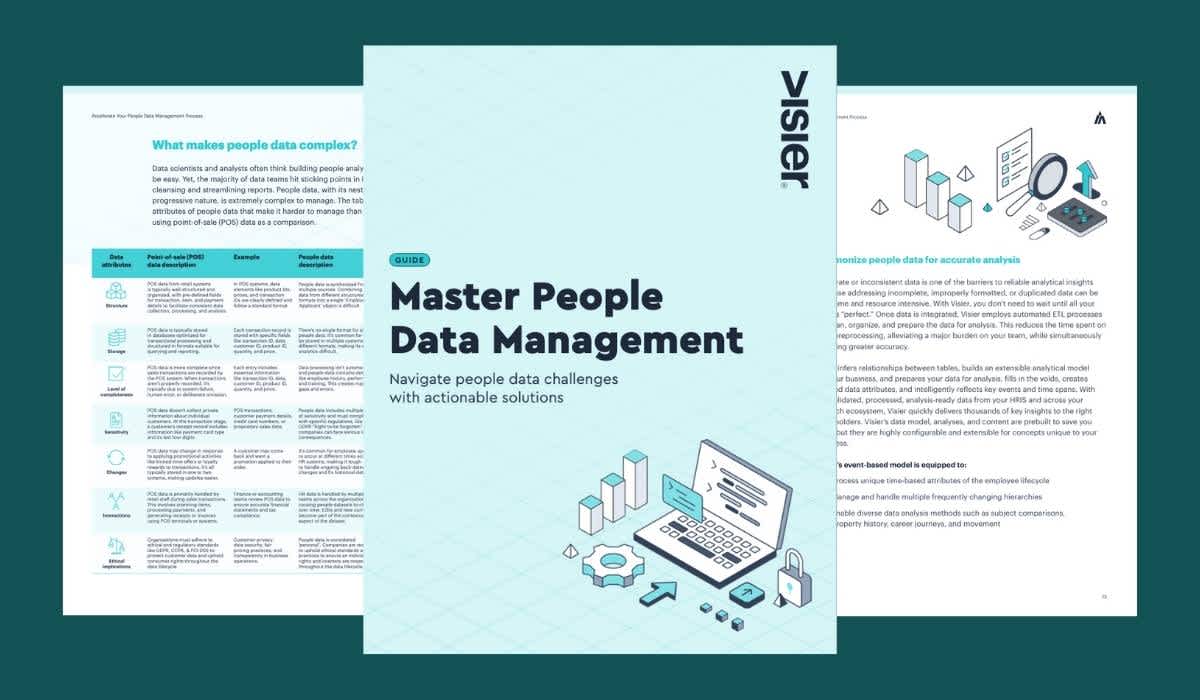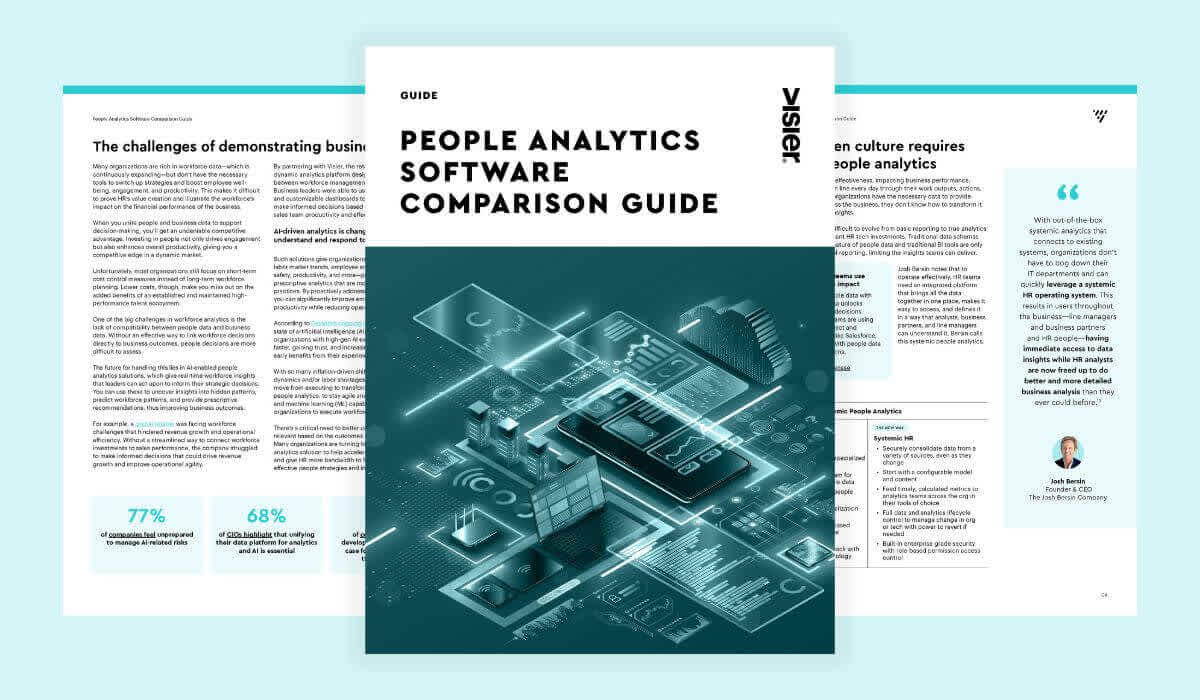How Sanofi is Driving HR Transformation Through People Data Insights
Sanofi is leading its HR data transformation with AI-driven people analytics. Learn how their strategic approach is turning people data into actionable insights.

With over 86,000 employees worldwide, Sanofi, a leading global biopharmaceutical company headquartered in Paris, France, is undergoing a significant transformation. It is shifting from a traditional pharmaceutical model to becoming a modern biopharma leader.
As a nation, France is beginning to recognize the value of advanced analytics to drive better outcomes and Sanofi is leading this charge. Why does Sanofi stand out as such an innovator? Because, at the heart of its progress lies a powerful commitment to leveraging AI and digital tools to enhance every aspect of its operations—from research and development to commercial strategies and, most importantly, its people.
It all starts with creating a strong foundation. For Nick Hudgell, former Global Head of People Insights at Sanofi, this foundation means reimagining how the People and Culture team uses data to inform decision-making, align with business strategy, and ultimately create impact.
"When I joined Sanofi two years ago, we were immature in terms of data utilization," Nick explained. "Lots of Excel files floating around, lots of PowerPoint dashboards, and working in silos with no centralized governance."
As such, Sanofi embarked on a multi-year roadmap to centralize its analytics efforts, improve data quality, and create a foundation for impactful decision-making. Central to this roadmap is Sanofi's collaboration with Visier's people analytics platform.

From descriptive metrics to actionable insights
Before investing in Visier, Sanofi had heavily relied on Workday Prism Analytics and internally built Power BI dashboards to track workforce metrics like attrition, headcount, and demographic trends. Whilst this provided HR data visibility, it quickly became clear that these tools were limited when it came to driving deeper, actionable insight.
Sanofi needed an intuitive, narrative-driven tool that would empower its management and HR teams with advanced insights that guide action. Although Nick and his team believed they could build these internally, they also knew this would be costly in terms of time, resources, and maintenance. They also knew that if they were to build these tools themselves, they would risk delays and missed opportunities on the path to their goal of focusing on the strategic use of data.
With that, Nick opted for the “buy” approach, prompting the exploration of external solutions that could bridge the gap between descriptive metrics—"What's happening?"—and predictive and prescriptive insights—"Why is this happening, and what should we do about it?"
Visier's ability to present insights in a storyboard format, combining visuals with contextual explanations, was a game-changer.
This certainly complimented Sanofi's pre-existing "snackable AI" insights platform, Plai Daily, which offers daily high-level insights to management and leadership across the organization.
As Nick explained, "Plai is all about simplifying data at a high level for managers. It surfaces the top three to five things they should focus on, but it's not meant for deep data exploration."
Visier, on the other hand, serves as the in-depth people analytics platform that HR leaders and managers can use to dig deeper into the data.
Adding to this ecosystem is Vee, Visier's conversational analytics tool powered by generative AI. Though still in the early stages of implementation at Sanofi, Vee stood out from the competition, promising to revolutionize how HR teams and managers interact with data, perfect for an “AI-first” business like Sanofi.
"With Vee, the goal is to enable conversational interactions with the data. Managers can ask questions like, 'Why is attrition higher this quarter?' and get instant, meaningful answers," Nick said.

Democratizing data and driving adoption
To ensure success, Nick first began by piloting Visier People® Essentials within Sanofi's digital function—a team already adept at using data to drive innovation. And the results were nothing short of transformative:
Streamlined analytics: By transitioning from disparate Power BI dashboards to Visier, the team reduced the time and resources required for data processing, enabling richer, data-driven discussions.
Higher engagement: An NPS survey during the pilot scored an exceptional 100, with 80% of users rating Visier significantly better than previous solutions.
Live data in action: The teams used Visier to present real-time outcomes, reducing preparation time and eliminating the need for static PowerPoints.
Building on this success, Sanofi is now scaling Visier across its people and culture team, with plans to expand access to over 14,000 managers. Explaining the broader impact of democratizing people insights across management, Nick explained:
"By giving managers access to their own data, we're not just democratizing insights—we're fostering a culture of data-driven decision-making. Managers can now bring more informed questions to their HR partners, which elevates the overall value of our People & Culture team."
Navigating privacy, security, and ethics
With data democratization (especially at such a large scale) comes the responsibility to safeguard privacy, security, and ethical use. With over 86,000 employees and varying regulatory requirements across regions, the stakes are high. A misstep could erode employee trust, invite compliance risks, or compromise the integrity of insights. For Sanofi, this means:
Aligning with local regulations and minimizing data exposure whilst ensuring enough information is available for meaningful insights.
Mirroring Visier to Workday's security model to maintain strict access controls while providing contextualized, aggregated insights.
Collaborating with Sanofi's Responsible AI Committee to ensure all advanced analytics and AI models adhere to ethical standards, eliminating bias and protecting employee data.
"We balance data minimization with the need to generate insights. Visier's support in automating security configurations has been invaluable, ensuring access is granted appropriately without compromising data integrity." Nick noted.
By prioritizing transparency, automating controls, and embedding ethics into its data strategy, Sanofi is setting a standard for responsible data democratization. As Sanofi continues to scale its use of people analytics, these safeguards will remain at the core of its strategy, enabling data-driven transformation without compromising trust.
Investing in the future of HR analytics
For Sanofi, the adoption of Visier is much more than just a technology upgrade—it's a catalyst for a cultural shift toward data-driven decision-making. By empowering managers with insights and embedding analytics into daily workflows, Sanofi is preparing for the future of work.
"The future of people analytics lies in providing insights in the flow of work. Platforms like Visier allow us to move from manual, fragmented analysis to intuitive, AI-powered insights that support strategic decision-making," shared Nick while reflecting on the future.
Sanofi's collaboration with Visier demonstrates how strategic investments in people analytics can drive cultural transformation, improve operational efficiency, and push organizations beyond simplistic HR transformation initiatives.
As Nick summarized, "Our goal is to make data accessible, actionable, and insightful—not just for HR, but for our entire organization. With Visier, we're not just modernizing—we're empowering every level of our business to make better decisions."



